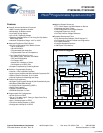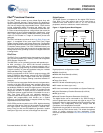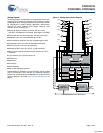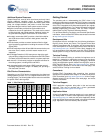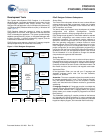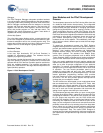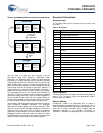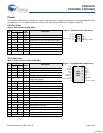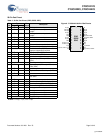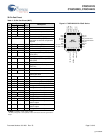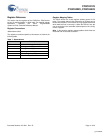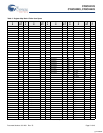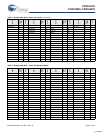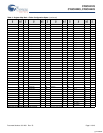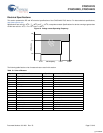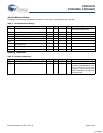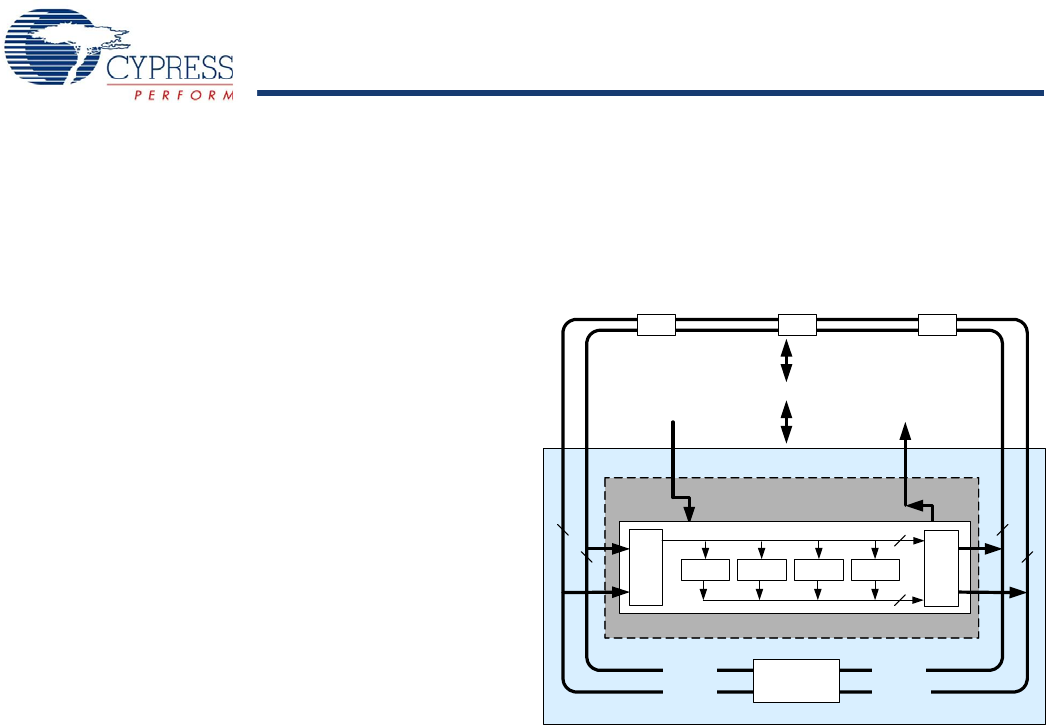
CY8C24123
CY8C24223, CY8C24423
Document Number: 38-12011 Rev. *G Page 2 of 43
PSoC
®
Functional Overview
The PSoC
®
family consists of many Mixed Signal Array with
On-Chip Controller devices. These devices are designed to
replace multiple traditional MCU-based system components with
one, low cost single-chip programmable device. PSoC devices
include configurable blocks of analog and digital logic, and
programmable interconnects. This architecture allows the user
to create customized peripheral configurations that match the
requirements of each individual application. Additionally, a fast
CPU, Flash program memory, SRAM data memory, and config-
urable IO are included in a range of convenient pinouts and
packages.
The PSoC architecture, as shown in the Logic Block Diagram on
page 1, is comprised of four main areas: PSoC Core, Digital
System, Analog System, and System Resources. Configurable
global busing allows all the device resources to be combined into
a complete custom system. The PSoC CY8C24x23 family can
have up to three IO ports that connect to the global digital and
analog interconnects, providing access to four digital blocks and
6 analog blocks.
PSoC Core
The PSoC Core is a powerful engine that supports a rich feature
set. The core includes a CPU, memory, clocks, and configurable
GPIO (General Purpose IO).
The M8C CPU core is a powerful processor with speeds up to
24 MHz, providing a four MIPS 8-bit Harvard architecture
microprocessor. The CPU uses an interrupt controller with 11
vectors, to simplify programming of real time embedded events.
Program execution is timed and protected using the included
Sleep and Watch Dog Timers (WDT).
Memory encompasses 4 KB of Flash for program storage, 256
bytes of SRAM for data storage, and up to 2 KB of EEPROM
emulated using the Flash. Program Flash uses four protection
levels on blocks of 64 bytes, allowing customized software IP
protection.
The PSoC device incorporates flexible internal clock generators,
including a 24 MHz IMO (internal main oscillator) accurate to
2.5% over temperature and voltage. The 24 MHz IMO can also
be doubled to 48 MHz for use by the digital system. A low power
32 kHz ILO (internal low speed oscillator) is provided for the
Sleep timer and WDT. If crystal accuracy is desired, the ECO
(32.768 kHz external crystal oscillator) is available for use as a
Real Time Clock (RTC) and can optionally generate a
crystal-accurate 24 MHz system clock using a PLL. The clocks,
together with programmable clock dividers (as a System
Resource), provide the flexibility to integrate almost any timing
requirement into the PSoC device.
PSoC GPIOs provide connection to the CPU, digital and analog
resources of the device. Each pin’s drive mode may be selected
from eight options, allowing great flexibility in external inter-
facing. Every pin also has the capability to generate a system
interrupt on high level, low level, and change from last read.
Digital System
The Digital System is composed of four digital PSoC blocks.
Each block is an 8-bit resource that can be used alone or
combined with other blocks to form 8, 16, 24, and 32-bit
peripherals, which are called user module references.
Figure 1. Digital System Block Diagram
Digital peripheral configurations include:
■ PWMs (8 to 32 bit)
■ PWMs with Dead band (8 to 32 bit)
■ Counters (8 to 32 bit)
■ Timers (8 to 32 bit)
■ UART 8-bit with selectable parity (up to one)
■ SPI master and slave (up to one)
■ I2C slave and master (one available as a System Resource)
■ Cyclical Redundancy Checker/Generator (8 to 32 bit)
■ IrDA (up to one)
■ Pseudo Random Sequence Generators (8 to 32 bit)
The digital blocks can be connected to any GPIO through a
series of global buses that can route any signal to any pin. The
buses also allow for signal multiplexing and for performing logic
operations. This configurability frees your designs from the
constraints of a fixed peripheral controller.
Digital blocks are provided in rows of four, where the number of
blocks varies by PSoC device family. This allows the optimum
choice of system resources for your application. Family
resources are listed in the table PSoC Device Characteristics on
page 4.
DIGITAL SYSTEM
To System Bus
D
i
g
i
t
a
l
C
l
o
c
k
s
F
r
o
m
C
o
r
e
Digital PSoC Block Array
To Analog
System
8
Row Input
Configuration
Row Output
Configuration
88
8
Row 0
DBB00 DBB01 DCB02 DCB03
4
4
GIE[7:0]
GIO[7:0]
GOE[7:0]
GOO[7:0]
Global Digital
Interconnect
Port 2 Port 1 Port 0
[+] Feedback



